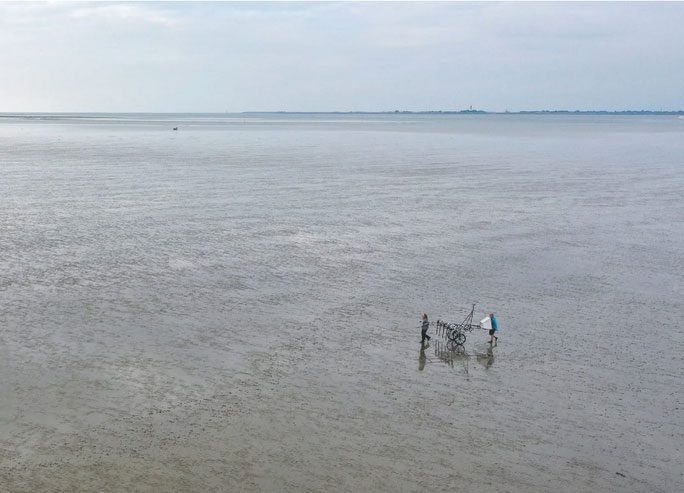The latest exploration of the ancient town of Rungholt, dubbed the “Atlantis of the North Sea”, has led to the discovery of the ruins of an ancient church off the coast of Germany along with many remarkable nearby structures.
German legend tells that Rungholt was a prosperous and large town on the coast of ancient Germany, believed to have met a catastrophic fate as a “divine punishment.”
Scientifically, the town is said to have vanished during a devastating natural disaster, a storm tide that struck the coast in January 1362 and buried the entire town beneath the waves.

The waterlogged area where the ghost town includes a 700-year-old church still submerged – (Photo: Dirk Bienen-Scholt).
The legendary town has resurfaced once again in a study conducted by a team of scientists from Kiel University (CAU), Johannes Gutenberg University Mainz (JGU), the Baltic and Scandinavian Archaeological Center (ZBSA), and the State Archaeology Office of Schleswig-Holstein (ALSH).
They have pinpointed the location of the majestic building along the coast where the town of Rungholt is believed to have once stood by combining geoscientific and archaeological methods, such as magnetic measurements, electromagnetic induction, and seismic surveys.
This building has been identified as an ancient church located on a foundation measuring 40 x 5 meters, situated amid a 2km stretch of ruins from a settlement.
Dr. Ruth Blankenfeldt, an archaeologist at ZBSA, stated: “The significance of this discovery lies in the importance of the church as a center of a settlement structure, which in its scale should be understood as a significant parish of that time.”
Surveys in the larger area, covering more than 10km2, have also revealed 54 structural strips belonging to settlements, a well-built drainage system, a coastal dyke, a port, and two smaller churches.
Archaeologists have indicated that further excavations are urgently needed as the remnants of the settlement are relatively faint and may be further damaged by natural disasters.


















































